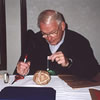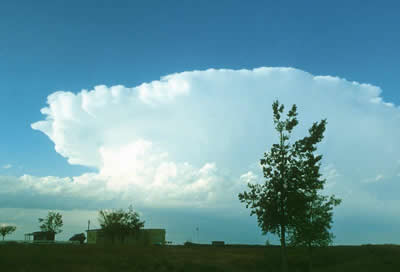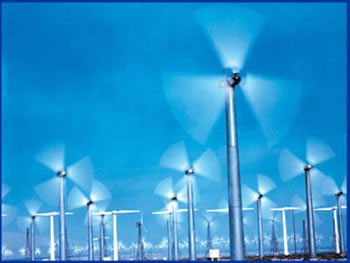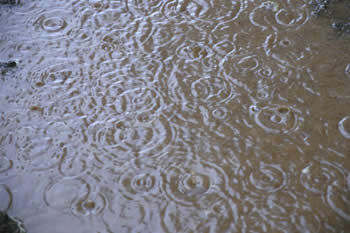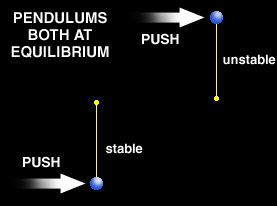Click on image for full size
Photo courtesy of Gregory Thompson
Supercell Thunderstorms and Squall Lines
A supercell thunderstorm is a huge rotating thunderstorm. It can last for several hours as a single entity. These storms are the most likely to produce long-lasting tornadoes and baseball-sized hail. Tornadoes produced from supercell thunderstorms are usually the largest and most damaging because of the duration of the thunderstorms. Several tornadoes can come from one supercell thunderstorm.
Supercell thunderstorms are formed as a result of strong wind shear and a rapid increase in the speed and/or direction of the wind. There are two types of supercell thunderstorms. One is associated with high amounts of precipitation that creates downbursts, flash floods, and large hail. The other type is with low precipitation, developing tornadoes and large hail.
A squall line consists of several thunderstorms banded together in a line. They generally develop parallel to and ahead of an advancing front. Usually a squall line forms between a cold front and a warm front. A squall line can form from an individual storm that has split, which then helps to form a line of storms. Another way a squall line forms is on the south side of an existing thunderstorm.
There are two types of squall lines. One type is a line of cumulonimbus clouds that grow and decay; the other is a line of steady supercells. Squall lines can be just as severe as a supercell thunderstorm. A squall line can produce heavy precipitation and strong winds. Most of the precipitation in the United States is from a squall line. Typically the heaviest rain occurs on the east side of a squall line. Squall lines can extend over 600 miles (1000 km) when associated with thunderstorms.



